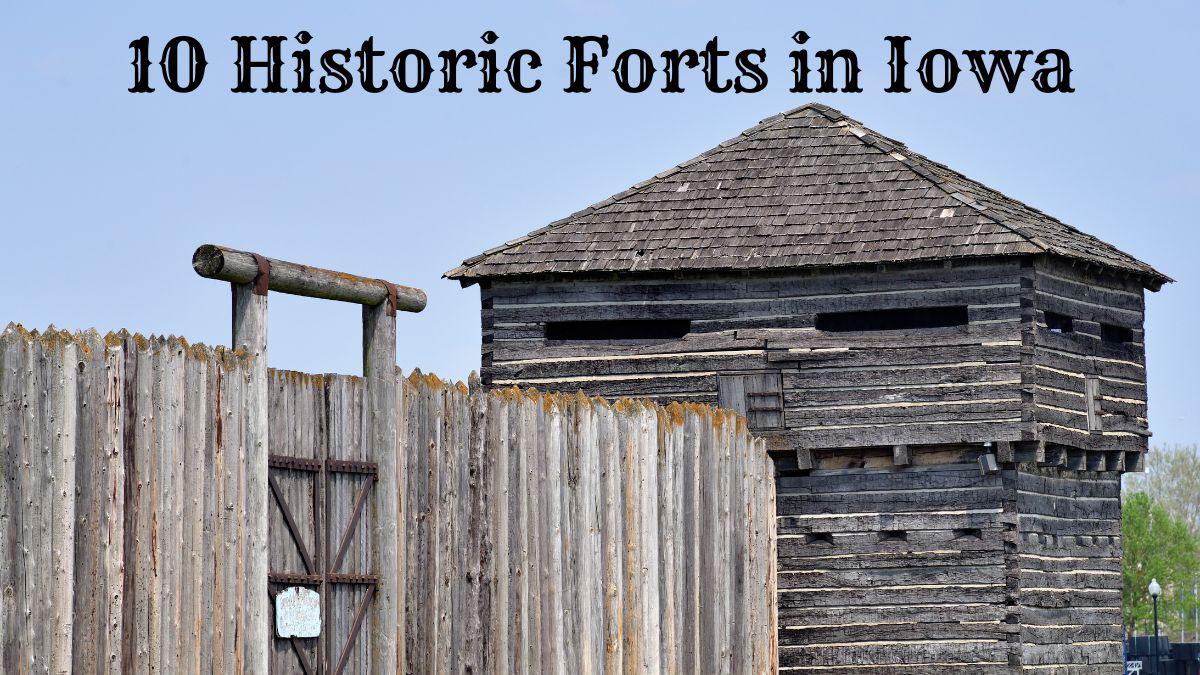Located in the upper Midwest of the United States, Iowa offers a rich tapestry of military history, which is evident in its diverse collection of historic forts.
These military posts, numbering at least fifty-six frontier forts, serve as silent witnesses to the transformative periods in the nation’s history, detailing the interactions of early settlers, Native Americans, and the burgeoning U.S. federal government.
In this article, Historic Forts in Iowa, we will explore ten fortifications that helped protect Upper Midwest settlers and assisted in building America’s breadbasket.
9 Historic Forts in Iowa
| 1. Fort Dodge | 6. Fort Des Moines No. 3 |
| 2. Old Fort Madison | 7. Fort Defiance |
| 3. Fort Atkinson | 8. Fort Severson |
| 4. Fort Des Moines No. 1 | 9. Fort Sanford |
| 5. Fort Des Moines No. 2 | 10. Fort Dodge 2 (Fort Clarke) |
1. Fort Dodge
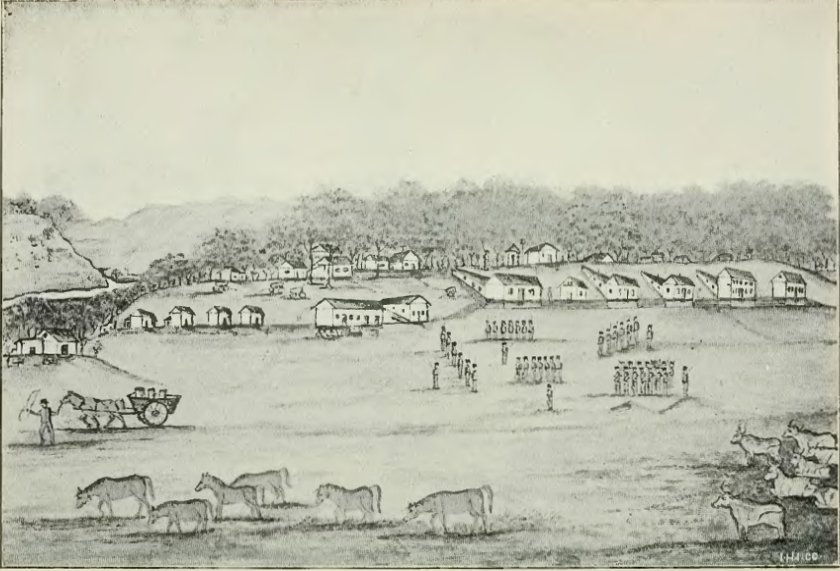
Established in 1850, Fort Dodge was initially situated near the Des Moines River and Lizard Creek confluence. Its primary objective was to protect the new wave of settlers from potential attacks by the Sioux.
This period was characterized by increasing tensions between the Native Americans and white settlers, leading to the need for military posts like Fort Dodge.
Maj. William Williams was a prominent figure during the fort’s early days. He and his troop of around 50 men from the 6th Infantry were essential in building and maintaining the post.
Lieutenant Colonel Stephen W. Kearny, a famed military leader who would later play significant roles in the Mexican-American War, was involved in early discussions about the fort’s positioning.
Evolution into a Military Garrison
What started as a trading post evolved into a U.S. Army military garrison by the mid-1850s. This transition was a reflection of the U.S. government’s strategic vision.
Recognizing the significance of such junctions for commerce, defense, and diplomacy, the fort expanded its capacity and infrastructure.
Significant Events and Later Years
The fort’s establishment was not without controversy. In its early years, the fort faced threats from the Sioux, leading to skirmishes in the surrounding regions.
However, by the late 1850s, the threats diminished, and the fort gradually shifted its focus from defense to becoming a pivotal center for commerce in the region.
By the Civil War in the 1860s, Fort Dodge had already been decommissioned as a military post. However, the town that grew around it retained the name and continued to thrive.
2. Old Fort Madison
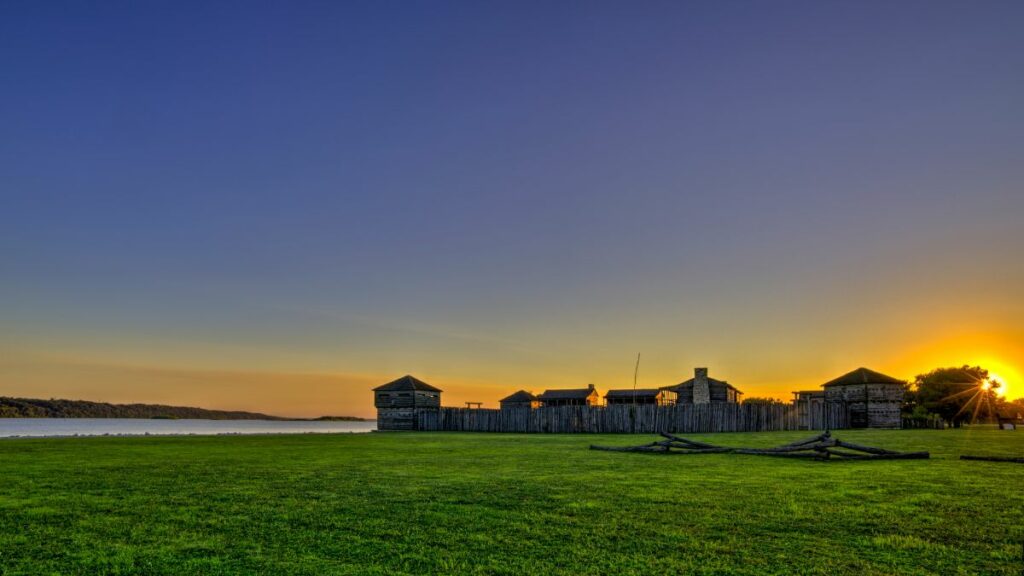
In the early 1800s, as the U.S. government sought to exert control over its new western territories, it recognized the strategic importance of the Mississippi River.
Thus, Fort Madison was born. Constructed between 1808 and 1809, it was named in honor of the fourth U.S. president, James Madison.
The fort was the first permanent U.S. military post on the upper Mississippi River, marking an assertive move by the federal government into what was then considered the western frontier.
Fort Madison’s location was chosen for its vantage point overlooking the Mississippi, allowing it to serve as both a deterrent to potential threats and a center of commerce.
As the fur trade flourished, the fort’s role as a trading post became evident. However, its location also made it vulnerable to attacks, particularly from Native American tribes who viewed the U.S. government’s westward expansion with increasing concern.
The War of 1812 and the Fort’s Downfall
Fort Madison became a focal point as tensions rose between the U.S. and Great Britain, culminating in the War of 1812. British-backed Native American forces, primarily the Sauk and the Fox tribes, repeatedly attacked the fort.
The most significant of these confrontations occurred in September 1812. Facing impossible odds and realizing the fort could not be held, U.S. forces, led by Lieutenant Thomas Hamilton, made the difficult decision to abandon and burn down the fort to prevent its capture.
Legacy and Preservation
Though the original fort’s lifespan was short, its historical significance is undeniable. The city of Fort Madison, which grew in the fort’s shadow, serves as a living testament to its enduring legacy.
In the 20th century, recognizing the fort’s historical importance, a replica of the fort was built close to its original location.
Today, it stands as a monument, drawing historians and tourists alike. Nearby, the Keokuk National Cemetery, a resting place for many veterans, further enshrines the region’s rich military history.
3. Fort Atkinson
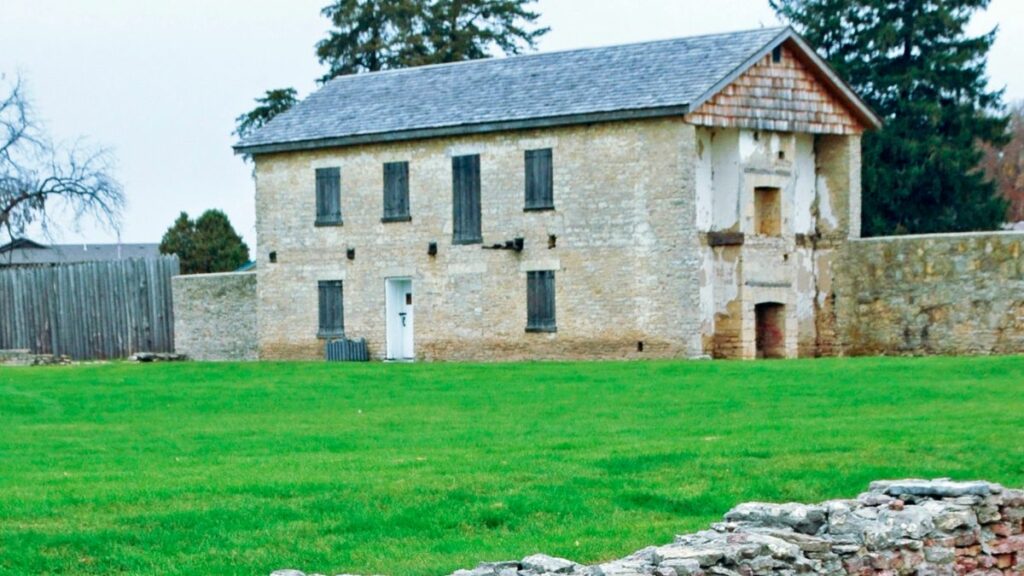
In the heart of Winneshiek County, Fort Atkinson emerged not merely as a symbol of military might but as a testament to the diplomacy and understanding between cultures.
Founded in the early 1840s, the primary purpose of this fort was to oversee and protect the Winnebago (Ho-Chunk) Indians after their forced removal from Wisconsin.
The federal government, recognizing the sensitivity of this move, deemed it necessary to establish a military presence to safeguard the Winnebago and ensure the terms of treaties were upheld.
The fort, strategically positioned to overlook the Turkey River, was a robust complex comprising multiple buildings.
Among these, the blacksmith shop stood out, offering vital services to the military personnel and the relocated Winnebago. The log cabin, another significant structure, provided shelter and represented a fusion of the army and civilian life within the fort.
Tensions and the Black Hawk Purchase
The establishment of Fort Atkinson followed the 1832 Black Hawk War, which arose from disputes over Native American lands in Illinois and the Wisconsin territory.
Following the war, the 1833 Treaty of Chicago, commonly called the Black Hawk Purchase, saw large tracts west of the Mississippi being ceded to the U.S. government.
The subsequent relocation of the Winnebago and other tribes only emphasized the need for Fort Atkinson, as the U.S. government sought to prevent further hostilities and maintain peace.
Decommissioning and Legacy
By the late 1840s, the Winnebago had been moved further west, and the immediate need for Fort Atkinson diminished. The fort was officially decommissioned in 1849.
However, its significance persisted. Today, the site is preserved as Fort Atkinson State Preserve. Visitors can explore reconstructed buildings, including the emblematic blacksmith shop and log cabin, returning to a time of change, challenge, and coexistence.
4. Fort Des Moines No. 1

In 1834, when the waters of the Des Moines and Raccoon Rivers intertwined, Fort Des Moines No. 1 was erected. The confluence of these two rivers made the site of the fort exceptionally strategic.
It was perceived as a vital location to exert U.S. federal government influence and to ensure the safe passage of early settlers venturing further west.
While its primary mission was to maintain peace between white settlers and nearby Native American tribes, Fort Des Moines No. 1 also played a pivotal role in scouting and exploration activities in the region.
Its garrison monitored and patrolled the surrounding areas, ensuring that treaties and agreements with local tribes were upheld, especially after the Black Hawk War and the resulting treaties.
Short-lived Existence and Reasons for Abandonment
Despite its initial strategic importance, the tenure of Fort Des Moines No. 1 was surprisingly brief. A combination of factors, including floods, disease, and a reassessment of military needs, led to its abandonment in the late 1830s.
Some records also indicate that the local conditions were unfavorable for the fort’s continuous operation, with rampant mosquitos and humid conditions causing health concerns for the stationed troops.
Legacy and the Birth of a City
Though the fort had a short operational life, its legacy was profound. Over time, the land surrounding the former fort would evolve into the vibrant city of Des Moines, which would become Iowa’s capital and one of its most populous cities.
The fort’s brief existence set the stage for urban development and growth in the region, catalyzing the transformation of the wilderness into a bustling urban center.
5. Fort Des Moines No. 2
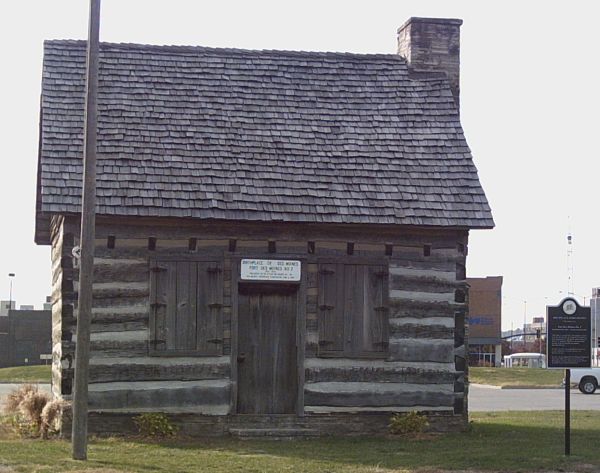
Fort Des Moines No. 2, established in 1834, marked a significant expansion of the U.S. military’s presence in the uncharted territories of Iowa.
Situated near the area now known as Montrose, this fortification was a military installation and a crucial administrative function.
Here, the foundations were laid for what would become Lee County, with the fort initially acting as the county seat and a critical center for legal and civic activities.
The fort’s location was no accident. Overlooking the mighty Mississippi, it was a critical point of control and defense for the burgeoning Western frontier.
It was tasked with several responsibilities, from safeguarding the territory after the Black Hawk Purchase to protecting the rights and well-being of Native American populations and incoming settlers.
Transition to Civic Life
While military activities were central to life at Fort Des Moines No. 2, the installation took on additional significance for the surrounding community.
The fort became a hub for civilian life and governance, laying the groundwork for structured legal and civic systems. Its role in establishing early administrative processes was pivotal, as it brought a sense of order to a remote and often chaotic frontier.
Decommissioning and Historical Impact
After several years of operation, the military importance of Fort Des Moines No. 2 began to wane. With shifting geopolitical priorities and administrative restructuring, the fort was decommissioned by the early 1840s.
However, the civilian settlement that had grown around it continued to flourish. The town of Montrose emerged around the former military post, carrying forward its legacy of civic importance as the original site continued to serve as a touchstone for the community.
Legacy and Continuance in Modern Montrose
Today, the spirit of Fort Des Moines No. 2 lives on in Montrose. While the fort no longer stands, its influence is palpable in the city’s layout, historical landmarks, and the ongoing role of Montrose as a key locale in Lee County.
The journey from a frontier military post to a modern settlement underscores the transformative power of these early fortifications in shaping Iowa’s social, administrative, and cultural landscape.
6. Fort Des Moines No. 3
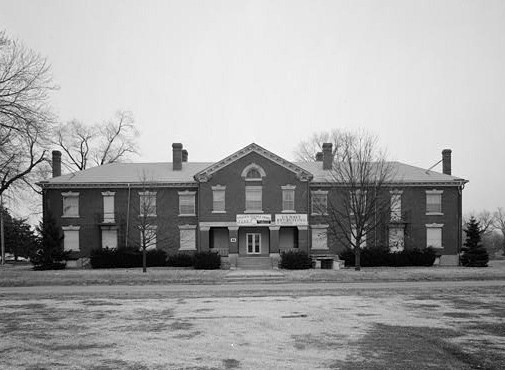
Fort Des Moines No. 3, initiated in the early 20th century, is the most recognized among the three Des Moines forts. Strategically positioned in what is now the capital city of Des Moines, it bore witness to some of the most transformative events in American military history.
While initially serving as an army garrison, its role would diversify significantly over the years, making it a linchpin in the story of Iowa’s military past.
As tensions escalated globally and the possibility of conflict loomed, Fort Des Moines No. 3 was established as a pivotal military garrison and training ground.
It saw a steady influx of soldiers, with rigorous training routines instilling discipline and preparing them for potential deployments. The fort became a hub of activity, with troops continually arriving for training stints and then departing for various assignments.
World War II and the Women’s Army Auxiliary Corps
The outbreak of World War II marked a notable shift in the fort’s operations. Recognizing the increasing need for personnel and the evolving role of women in warfare, the U.S. Army decided to establish the Women’s Army Auxiliary Corps (WAAC) in 1942.
Fort Des Moines No. 3 was chosen as the training site for this groundbreaking initiative. This marked the first time in American history that women, outside of nursing roles, were integrated into the army, albeit in a non-combat capacity.
The fort underwent significant adaptations to facilitate the training and housing of thousands of women who came to serve their nation.
Legacy and Modern Implications
Post World War II, the fort transitioned into different roles, including serving as a medical center for returning veterans.
However, its significance in the broader narrative of U.S. military history remains anchored in its role during the war, particularly as the birthplace of the WAAC.
Today, while the fort has been repurposed, its historical footprint is evident in Des Moines.
The fort’s legacy as a bastion of progress, adaptability, and inclusivity can be seen through memorials, museum exhibits, and commemorative events. It reminds modern generations of the profound military and societal norms shifts within its walls.
7. Fort Defiance

As the name suggests, Fort Defiance stood as a symbol of resistance and determination in adversity. Established in the 1850s, this military outpost in Estherville, Iowa, played a unique role in the state’s early history.
While some forts were strategically positioned to oversee trade routes or serve as diplomatic centers, Fort Defiance was primarily established to protect the settlers in the region.
During this period, the state of Iowa was undergoing rapid transformation, with new immigrants arriving and interacting with Native American tribes. Fort Defiance was a refuge for these settlers, ensuring their safety during turbulent times.
Natural Beauty and Surroundings
Beyond its military significance, Fort Defiance is renowned for its natural beauty. The lush woodlands surrounding the fort starkly contrasted the grim realities of frontier defense. T
Today, Fort Defiance State Park encompasses over 191 acres, showcasing the stunning natural beauty of Iowa’s landscape.
Legacy and Modern-day Significance
While the military operations at Fort Defiance ceased long ago, the area’s significance hasn’t waned. Transitioned into a state park, it now offers residents and visitors a serene environment for recreation while still echoing the past’s resonances.
Hiking trails, picnic areas, and interpretative signs about the fort’s history invite modern-day explorers to delve into Iowa’s rich past.
8. Fort Severson
Amidst the mosaic of forts that once dotted Iowa’s landscape, some, like Fort Severson, have faded into the annals of history, yet their impact remains undeniable.
Established in the mid-19th century, Fort Severson was a beacon of hope for early settlers venturing into uncharted territories. While not as glorious as some of its counterparts, its primary purpose was to offer protection.
As the U.S. government looked to expand westward, forts like Severson served as intermediaries, facilitating dialogue between Native Americans and white settlers and ensuring that U.S. interests were maintained.
Interactions with Native Tribes
Fort Severson’s strategic location was at the crossroads of various tribal territories, including the Winnebago and Fox Indians.
It played a vital role in fostering relationships, often delicate, and sometimes served as a trading post, bridging the cultural gap between diverse communities.
Decline and Legacy
Over time, as the need for such military fortifications waned, and settlements became established towns and cities, Fort Severson was decommissioned. Its original structure might have faded, but the fort’s impact on the region’s development is undeniable.
Today, while the exact location of Fort Severson remains a subject of historical exploration, its legacy is cemented in local lore and the community’s collective memory.
Scholars and enthusiasts, often backed by organizations like the Daughters of the American Revolution, continue their quest to unearth more about this forgotten fort.
They hope to piece together its story and further enrich Iowa’s rich tapestry of military history.
9. Fort Sanford
Amid the vast landscape of Iowa, Fort Sanford stands out with its brief yet impactful history.
Established in the early 1840s on the Des Moines River’s eastern banks, this U.S. Army post had deep ties to the trading activities of the Pierre Chouteau, Jr. & Company and the intricate dynamics between the U.S. government and the Sac and Fox Indian tribes.
In October 1842, Captain James Allen of the 1st U.S. Dragoons, fresh from his duties at Fort Atkinson, established Fort Sanford. The location was strategic: Pierre Chouteau, Jr. & Company operated a previous trading post site.
Under Captain Allen’s supervision, troops occupied eight existing cabins, which had once been integral to the trading post’s operations.
These cabins were generously provided by John Sanford, Pierre Chouteau’s son-in-law and a company partner. To accommodate the soldiers further, new quarters were constructed for officers, along with stables for their horses.
Naming and Renaming
Initially, the post bore the name of John Sanford in recognition of his significant contributions to its establishment.
However, in its bid to align the fort’s identity with its primary mission, the U.S. War Department later renamed it the “Post at Sac and Fox Indian Agency.”
This name underscored the fort’s primary role in overseeing and managing relations with the Sac and Fox Indian tribes.
Decline and Abandonment
The existence and operations of Fort Sanford were deeply entwined with the presence and movements of the Sac and Fox Indian tribes.
As these tribes were gradually relocated and moved from the region, the fort’s strategic importance dwindled.
By 1843, a mere year after its establishment, the fort was abandoned, marking the end of its short-lived but significant role in the region.
10. Fort Dodge 2 (Fort Clarke)
As the United States ventured further westward during the 19th century, the necessity for protective strongholds grew paramount.
Responding to this call in 1850, Fort Clarke sprouted in the strategic landscape of Iowa. Positioned advantageously near pivotal trade routes, waterways, and transition paths, Fort Clarke wasn’t simply a bastion of defense; it served as a vital bridge facilitating interaction between the U.S. government and indigenous Native American tribes.
The fort’s original designation, Fort Clarke, was a tribute to Colonel Newman S. Clarke, a noteworthy figure in the U.S. military during that era.
Clarke’s commitment, courage, and leadership symbolized the spirit needed to navigate the challenges of frontier life, making it apt to immortalize his contributions by naming the fort in his honor.
Transition to Fort Dodge
Yet, as the region’s geopolitical narrative evolved and the fort’s role became increasingly prominent, a renaming was deemed apt.
Thus, in a nod to Major General Henry Dodge, the fortress embraced its more recognized identity as Fort Dodge on June 25, 1851. This shift was more than just cosmetic; it represented a deeper alignment with the time’s changing strategic import and priorities.
The Fort’s Lasting Legacy in Iowa
The bricks and mortar of what was once Fort Clarke and later Fort Dodge may have succumbed to time, but the legacy it has imprinted on Iowa is undying. The fort has indelibly shaped the growth trajectory of surrounding communities.
It remains a beacon in Iowa’s historical narratives, encapsulating tales of early challenges, triumphs, and the tenacious spirit of frontier resilience.
Related: 10 Historic Forts in Massachusetts
Conclusion – Historic Forts in Iowa
The intricate tapestry of Iowa’s history is woven with the threads of military fortifications, symbolizing the U.S. Army’s presence and the country’s westward ambitions.
Many of these forts, from their original structures to their evolving purposes, have witnessed pivotal moments that have shaped Iowa and the nation.
While the exact location of some forts has faded into the annals of time, their influence persists, capturing the essence of an era defined by discovery, diplomacy, and defense.
In its quest to establish a foothold in the ever-expanding frontier, the U.S. government interacted with European settlers and indigenous communities like the Winnebago and Fox Indians.
These interactions, often complex and layered, played out within the walls of these fortresses, establishing them as epicenters of cultural exchange and geopolitical maneuvering.
Designations like the National Register of Historic Places have acknowledged the significance of these forts, ensuring they remain etched in collective memory.
The Fort Des Moines Museum, among others, serves as a repository of this rich legacy, preserving artifacts and narratives that echo the stories of those who once inhabited these posts.
Organizations such as the Daughters of the American Revolution have played an instrumental role in recognizing and commemorating the value of these forts.
Their efforts and others have highlighted the forts’ roles as training camps, strategic outposts, and symbols of the War Department’s vision for a secured and expanding nation.
Thanks for reading, and if you have visited any of these forts, we would love to hear about your experience in the comments section below.

Cory is a website owner and content creator who enjoys fishing, history, coin collecting, and sports, among other hobbies. He is a husband and father of four.
Romans 15:4 For whatever was written in former days was written for our instruction, that through endurance and through the encouragement of the Scriptures we might have hope.

